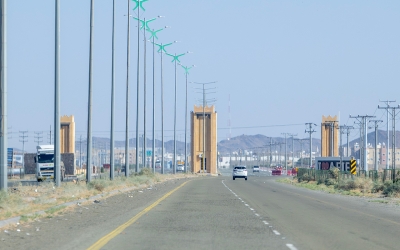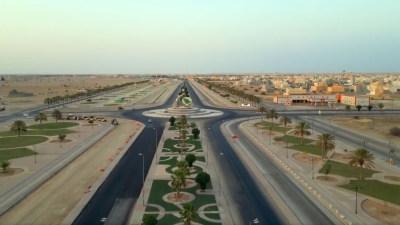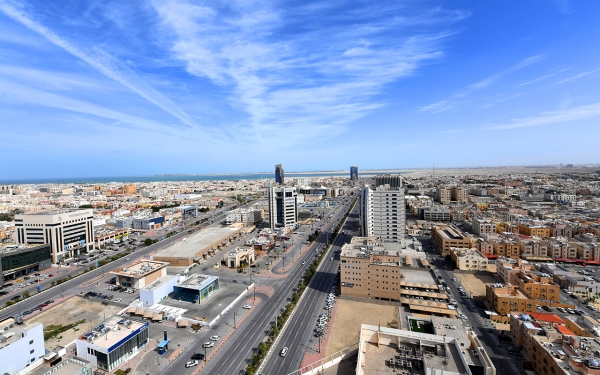
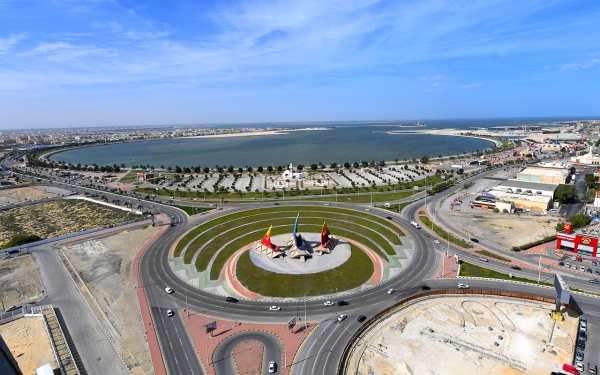
Dammam City (romanized: ad Dammām) is the administrative capital of the Eastern Province. Dammam is part of the Eastern Province, which is a desert plain stretching from the coast of the Arabian Gulf to al-Dahna desert. The Eastern Province shares borders with Kuwait to the north, Qatar and Bahrain to the east, and the United Arab Emirates and Oman to the south.
Climate of Dammam City
The climate of Dammam City is generally moderate, where the weather is usually clear, and the air is refreshing. However, during the period between May and August, the temperature reaches up to forty-six degrees Celsius, and the weather becomes hot and humid during that period. As for the winter season, which falls between November and February, the temperature drops to around eight degrees Celsius, with occasional, rarely heavy rainfall.
Popular dishes in Dammam City
The cuisine in the city of Dammam is influenced by its geographical surroundings in the neighboring Arab Gulf countries, as well as by the Iraqi, Iranian, and even Indian kitchens, with their spices that enhance the flavor of the dishes. It closely resembles the cuisines of other regions in the Kingdom of Saudi Arabia. Seafood is the most prominent feature on the dining tables in the homes of Dammam city, due to its proximity to the shores of the Arabian Gulf. You will find various dishes made from fish and shrimp on the tables. Among the most famous dishes in Dammam are al-Jareesh, al-Marqooq, al-Qursan, al-Samboosa, al-Haneeni, and al-Maraseea, as well as traditional desserts. In addition, there are al-Balilah, stuffed grape leaves, stuffed cabbage, al-Jareesh, and al-Harees.
Settlement in Dammam
The history of settlement in the Eastern Province dates back to over five thousand years ago, and it was a center of attraction for settlers. The graves found in the region provide evidence of this, as do the remnants of buildings, city ruins, pottery, and handcrafted sculptures. These excavations have proven that the area lies at the crossroads of various cultures and activities.
The region was influenced by the cultures of Ubaid (from three thousand to two thousand years BCE), the inhabitants of Mesopotamia, the civilization of the Indus River Valley, the Greeks, and the Persians.
Demographic Composition of Dammam City
According to the General Authority for Statistics, the population of Dammam city in 2022 was 1,532,326 people, representing 29.9 percent of the population of the Eastern Province. Of these, 761.8 thousand are Saudis, and 770.5 thousand are non-Saudis. Also, 77.1 percent of Dammam city's population is of working age, while 21 percent are children.
Landmarks of Dammam City
Dammam City boasts various cultural, artistic, recreational, and educational landmarks that play a significant role in the social dynamism of the Eastern Province as a whole. Among the most prominent of these landmarks are:
Dammam Regional Museum
The Dammam Regional Museum is one of the museums in the Dammam City in the Eastern Province of the Kingdom. It is located in the Dammam Public Library building, occupying an area of 1,281 m². The museum was inaugurated in 1985.
The museum comprises four halls. The first hall, called the Prehistoric Hall, displays texts and images narrating the beginnings of humanity, the formation of the Earth, and its geological layers. Additionally, it features a collection of stone tools and images of sites dating back to prehistoric times, including the period known as the Ubaid era in the region.
The second hall, named the Pre-Islamic Hall, displays a collection of tools, pottery pieces, various inscriptions, and ancient writings that date back from the end of the Stone Age to the pre-Islamic era. It also showcases texts and images about the periods preceding Islam.
The third hall, the Islamic Hall, recounts the migration of the Prophet Mohammed (PBUH) to al-Madinah al-Munawwarah, the era of the Rightly Guided Caliphs, and subsequent Islamic periods. This is conveyed through a variety of items, paintings containing texts, images, and diagrams that date back to those periods.
The fourth hall, named the Prince Mohammed Bin Fahd Heritage Hall, houses a number of heritage pieces, coins, and pottery vessels. The museum also showcases films about the Kingdom's archaeological sites and heritage.
In 2011, the cornerstone for the Dammam Regional Museum project was laid in King Abdullah Bin Abdulaziz Park at the waterfront in Dammam. The building consists of five floors, spanning an area of 17,849.10 m², and its cost amounts to around SAR45 million. The building comprises exhibition halls, five floors and their components, which include outdoor exhibits, and display halls, and consists of seven halls, the main entrance lobby, a visitors' exhibition hall, classrooms, a restoration section for archaeological pieces, a library, researchers' offices, a services area, and parking.
The museum also houses a covered outdoor exhibition hall, which includes outdoor display galleries, aquatic and green spaces, spiral-shaped exhibition halls (spiral shape) that consist of a prehistoric environment hall, pre-Islamic period hall, Islamic period hall, heritage hall, modern history hall, Kingdom unification exhibit hall, and the ground floor hall. This last one features a glass dome and includes the main entrance hall, a reception area for VIP guests and information, a souvenir gifts section, a visitor's exhibition hall, classrooms, child education sections, and the main storage area for archaeological pieces.
The first floor includes the restoration department, a secondary storage area for archaeological pieces, a library, and researchers' offices. The second floor houses the administrative offices and their associated services. The third floor contains the women's administrative offices and their related services. The fourth floor features a cafeteria and a restaurant under the glass dome, along with their related services. Additionally, there are public parking spaces for the building that can accommodate hundreds of cars to serve the museum's visitors.
Transportation in Dammam City
The transportation in Dammam City is characterized by its vitality and activity, due to several factors. The most prominent of these is the city's location in the Eastern Province, which borders five of the Gulf Arab countries. Dammam also acts as the Kingdom's gateway to the east, in addition to being a beach area, as well as the commercial and industrial activity witnessed in the region.
King Fahd International Airport in Dammam
King Fahd International Airport in Dammam, with the IATA code DMM, was inaugurated in 2000. Its design combines modernity with Islamic architectural character. The airport spans an area of 776 km². And it is an international airport with one terminal.
According to its official website in 2023, King Fahd International Airport in Dammam is the third-largest international airport in the Kingdom in terms of passenger numbers. Since 2017, it has been managed and operated by the Dammam Airports Company. The airport's annual capacity reaches ten million passengers. It connects to forty-three destinations and is served by thirty-seven airlines.
King Abdulaziz Port in Dammam
King Abdulaziz Port in Dammam is the primary port for the Kingdom on the Arabian Gulf and is connected to the Dry Port in Riyadh by a railway. Goods from around the world destined for the eastern and central regions pass through it. The port was established by order of King Abdulaziz Bin Abdulrahman Al Saud, the founder of the Kingdom. Its construction was overseen by Aramco to meet the demands of industry oil. The port subsequently underwent several expansions, with a new expansion being inaugurated in 1961. It was then named King Abdulaziz Port.
King Abdulaziz Port in Dammam has forty-three berths, allowing it to accommodate large ships. The port offers operational services and houses handling equipment that enables it to manage multiple types of goods. In addition, there are several support stations for containers and general cargo. The port also includes other auxiliary terminals. Within the port, there's a ship repair facility that comprises two floating dry docks that can accommodate ships up to 215 m in length.
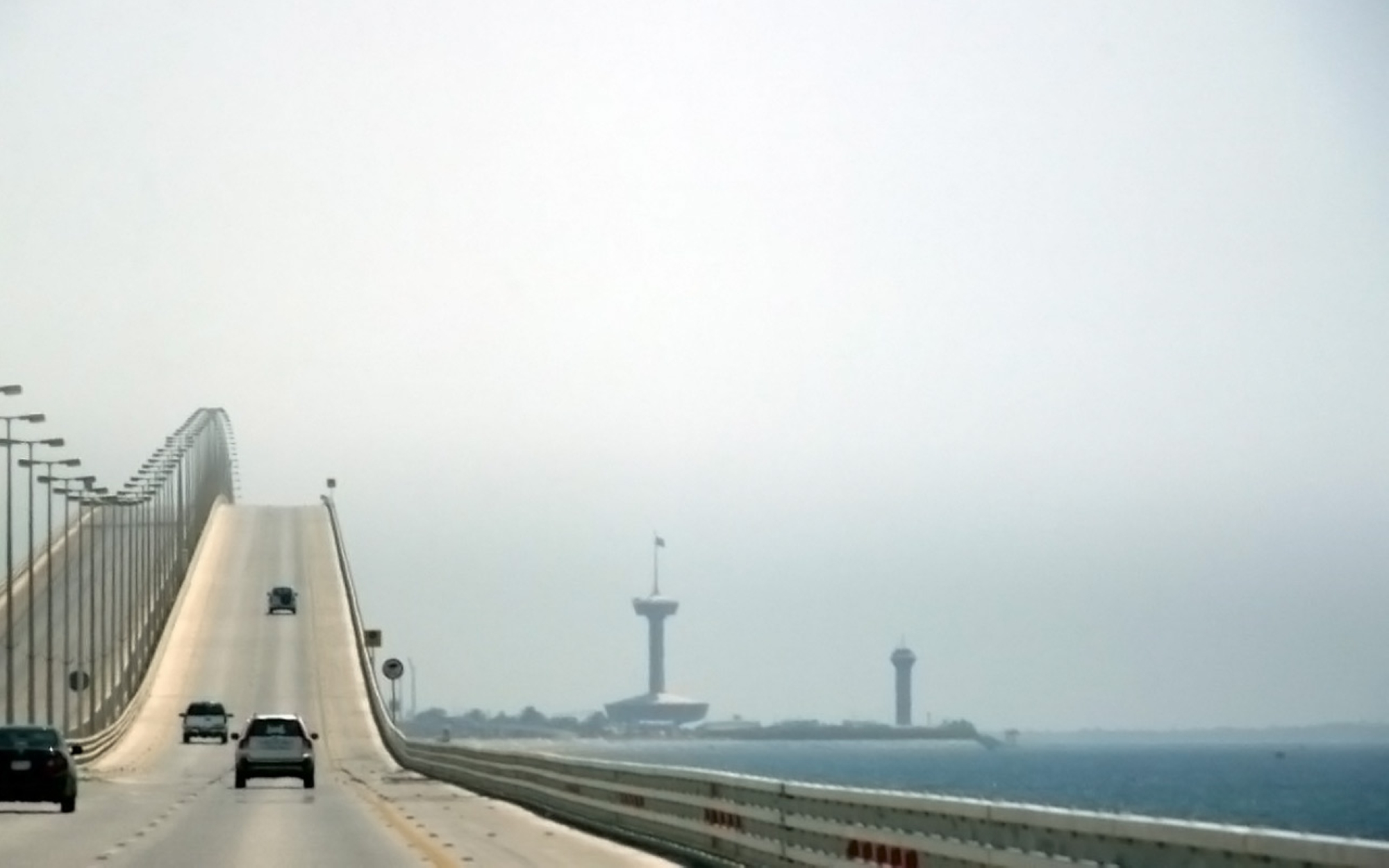
King Fahd Causeway
King Fahd Causeway is the link between the Kingdom of Saudi Arabia and the Kingdom of Bahrain. It was opened in 1986, measures twenty-five km in length, and its construction cost exceeded SAR3 billion. The causeway's operation and oversight are managed by the King Fahd Causeway Authority. The King Fahd Causeway is frequented by a large number of travelers annually. According to statistics published by the King Fahd Causeway Authority on its official website in 2023, the causeway was crossed by 156 million vehicles, 374 million passengers, and seven million trucks.
Road Network in Dammam City
The road network in Dammam constitutes a part of the road system in the Eastern Province. As of 2021, the total length of roads in the Eastern Province reached 8,416 km, of which 7,428 km are existing roads under maintenance and 998 km are roads under construction. The number of bridges in the region is around four hundred. Abu Hadriyah Highway is one of the most important roads in the region, which has a total length of 328 km; Dhahran-Jubail Highway, which is seventy-seven km long; and Dammam Ring Road, which spans 12.4 km. Additionally, there's Dammam- Abu Hadriyah-Hafar al-Batin-al-Rarqea Road, which is five hundred km in length; also there are Dammam-Dhahran and Ras Tanura Highway; Dammam-al-Ahsa Highway; Dammam-Riyadh Highway; Dammam-Abqaiq road; Dammam-al-Qatif Road; and Dammam-Half Moon Beach road.
Sports clubs in Dammam City
Dammam city hosts three sports clubs: Al-Ettifaq, al-Nahda, and al-Dammam. Some of these clubs have supplied the Kingdom's national teams with players and coaches, who have contributed to achieving accomplishments on Arab, continental, and international levels, especially in football.
Al-Ettifaq Club in Dammam
Al-Ettifaq Club was established in 1945 when members of three football teams (al-Taawon, al-Shabab, and al-Shaab) decided to merge them into one team under the name of al-Ettifaq. In 1965, the club clinched the Crown Prince Cup, which is considered one of the most important sports tournaments in the Kingdom. In 1968, al-Ettifaq won the King's Cup of the Kingdom. In 1983, the club bagged the Gulf Clubs Championship, and in the same year, they claimed the Premier League title. In 1984, they secured the Arab Club Champions Cup, and in 1985, the team won the King's Cup, making it the second time after winning the same title in its early years. In 1988, the club achieved both the Gulf Clubs Championship and the Arab Club Champions Cup, marking the second time after achieving this feat in 1984. In 2002, al-Ettifaq clinched the Prince Faisal Bin Fahd Championship in its new Olympic format. In 2003, they obtained the Prince Faisal Bin Fahd Cup (Saudi Arabian Football Federation), and in 2004, they triumphed in the Prince Faisal Bin Fahd Cup once again. Finally, in 2007, al-Ettifaq was crowned champions of the Gulf Clubs Championship for the third time.
Al-Nahda Club in Dammam
Al-Nahda Club was established in Dammam around 1942 following a dispute and misunderstanding within al-Hilal Club in al-Khobar. A group of players formed another team, al-Nahda in al-Khobar. By 1948, the club relocated to Dammam, and its name at that time was al-Nar Club. The club was located behind the coast guard, west of al-Dawasir neighborhood, and adjacent to the electricity company. Al-Nahda Club participated in the premier league for football for approximately twenty-six years before being relegated in 1991.
Al-Nahda Club in Dammam has produced many prominent players including: Mohammed al-Zouri, Issa Hamdan, Matar al-Johar, Muqbil al-Dunini, midfield player Fahad al-Marjan, Khaled al-Muheizaa, Khaled al-Fahid, Abdullah al-Azman, Abdulaziz al-Ashban, Majid al-Humlan, the Ghadeer sons: Ibrahim and Youssef, Nasser al-Mansour, Shabeeb Tarjam, as well as young players like Majid al-Humlan, Nasser Bilal, Jamal al-Fahid, Nafea al-Shammari, Abdulaziz al-Humaini, Nawaf Hamad, Jasim al-Shaaban, Ya'qoub al-Saadoun, Mmadoh al-Dunini, Nayef al-Dunini, Badr al-Shamsi, Fuad al-Salim, Adel al-Junun, Sayeb al-Attrash, goalkeeper Jamal al-Dosari, and also the national coach Ahmed Saad.
In addition to its football teams (the first team and the age groups), al-Nahda Club offers a variety of sports, including badminton, fencing, swimming, table tennis, lawn tennis, squash, karate, taekwondo, basketball, and volleyball.
Al-Dammam Club
Al-Dammam Club was established in 2021, having obtained a license from the Ministry of Sport and membership from the Saudi Arabian Football Federation. It is a sport, cultural, and social club based in Dammam City, specifically in the western districts of the city.
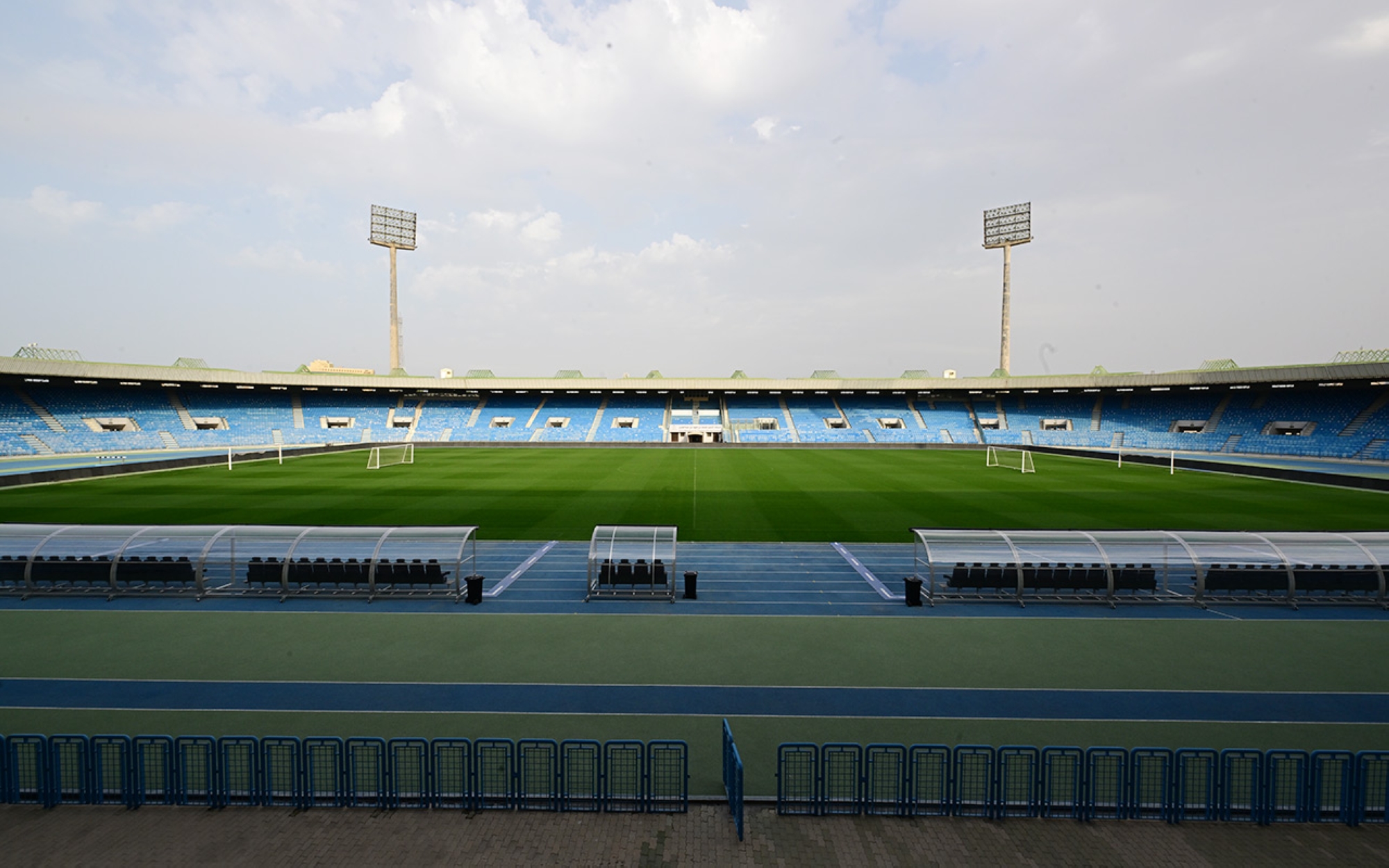
Sports facilities in Dammam
Dammam City houses several sports facilities affiliated with the Ministry of Sport. These venues host various sports matches and events. Among the most prominent ones are:
Prince Mohammed Bin Fahd Stadium: It is the primary football stadium in the Eastern Province and is located at the southeastern entrance of Dammam city. The stadium was built on an area of 105,929.06 m². The stadium includes a VIP building and its annexes, a mosque building and its annexes, ticket sale rooms, a grass football pitch, and an athletics track.
Sports complexes in Dammam: These are located on the Dammam–Khobar highway, on land with a total area of 128,000 m². The complexes consist of an international swimming and aquatic sports hall with a seating capacity of 1,814 people and an international sports hall with a seating capacity of 5,189 people. In addition to the outdoor facilities such as gardens, pathways, and parking spaces.
Education in Dammam City
Formal education in Dammam began at an early stage. The Second Primary School is among the oldest formal schools in Dammam. It was built by Aramco company and was inaugurated by King Saud Bin Abdulaziz Al Saud in 1954. Its name was later changed to al-Qadisiyah School. Over the subsequent decades, education in Dammam has grown and evolved both in quantity and quality.
Primary education in Dammam City
The total number of public schools for the three stages: elementary, intermediate, and secondary in Dammam city reaches 615 governmental and private schools, with a student population of approximately 211,136 students. Of these schools, 158 are governmental schools for boys, with classrooms accommodating 66,410 students. Meanwhile, the number of schools for girls is 193, hosting 77,825 female students. The total number of students in the governmental schools in Dammam is 144,235, according to the latest statistical data.
The number of private schools in Dammam city reaches 264. Among them, 174 schools are for boys, with a student count of 50,947. Additionally, there are ninety private schools designated for girls, with classrooms accommodating 15,954 female students. The total number of students in private education schools is 66,901, according to the latest educational statistics.
All schools in Dammam City are supervised by the General Directorate of Education in the Eastern Province. This Directorate is the main authority responsible for all educational affairs in the Eastern Region, including Dammam city. It is divided into more specialized departments such as the Educational Supervision Department, Training and Scholarship Department, Student Activity Department, Talents Department, Evaluation and Admission Department, Guidance and Counseling Department, Special Education Department, Adult Education Department, School Planning Department, Health Affairs Department, in addition to the School Facilities Department. These departments manage the educational affairs in Dammam city through several offices, including the Education Office at the east of Dammam and the Education Office at the west of Dammam.
The education system in Dammam City is a part of the educational system in the Kingdom. In Dammam, numerous educational options are available, encompassing all academic levels. Starting from kindergartens, passing through all stages of public education, and extending to university education and postgraduate studies, military education, and technical education. Additionally, there are pathways for technical and vocational education.
These paths of technological and vocational specialties can be studied as majors in the Dammam College of Technology, which was established in 1987. The college provides education in several fields that include the following: multimedia technology, web painting, chemical production, electric power, production specialization, automotive mechanics, air conditioning and refrigeration, computer programming, technical support, network technology, accountancy, marketing, land survey, civil engineering, complicated equipment and machines, office applications, computer maintenance for the deaf, in addition to architecture specialization.
Dammam City also has a number of kindergartens, which focus on building cognitive and mental skills for children in early age stages. They are distributed throughout the city of Dammam and are overseen by the General Directorate of Education in the Eastern Province.
Public libraries play a significant role in enriching the scientific and research movement in the city of Dammam. The city is home to several libraries, including the Public Library of Dammam, which was established in 1962. Additionally, there's the central main library at Imam Abdulrahman Bin Faisal University, among other public and private libraries.
Students can access educational facilities in Dammam through various means, such as public and private transportation, in addition to school transportation. This service is available in all schools, and the Ministry of Education supervises it in coordination with Tatweer for Educational Transportation Services Company. This company is responsible for everything related to student transportation in schools.
The educational system in the city of Dammam enables individuals with disabilities to access all educational services tailored to their conditions. Several specialized programs are available to cater to them, in addition to multiple institutes and schools that provide care and education based on the type of disability. This includes schools and institutes for physical and health disabilities, schools and institutes for auditory and visual impairments, as well as schools and institutes for intellectual disabilities and learning difficulties. The Special Education Department, which is part of the General Directorate of Education in the Eastern Province, oversees all educational services provided to the special education categories and people with disabilities.
The educational system in Dammam City provides extensive opportunities for nurturing the talents of students. Among these opportunities is the establishment of a center named the Gifted Center, which aims to identify talented students in schools, care for them, and develop their skills. Subsequently, especially talented students have the opportunity to join the King Abdulaziz and His Companions Foundation for Giftedness and Creativity in the capital, Riyadh. This foundation is responsible for offering various programs for gifted students after recruiting them from all educational directorates across different regions of the Kingdom.
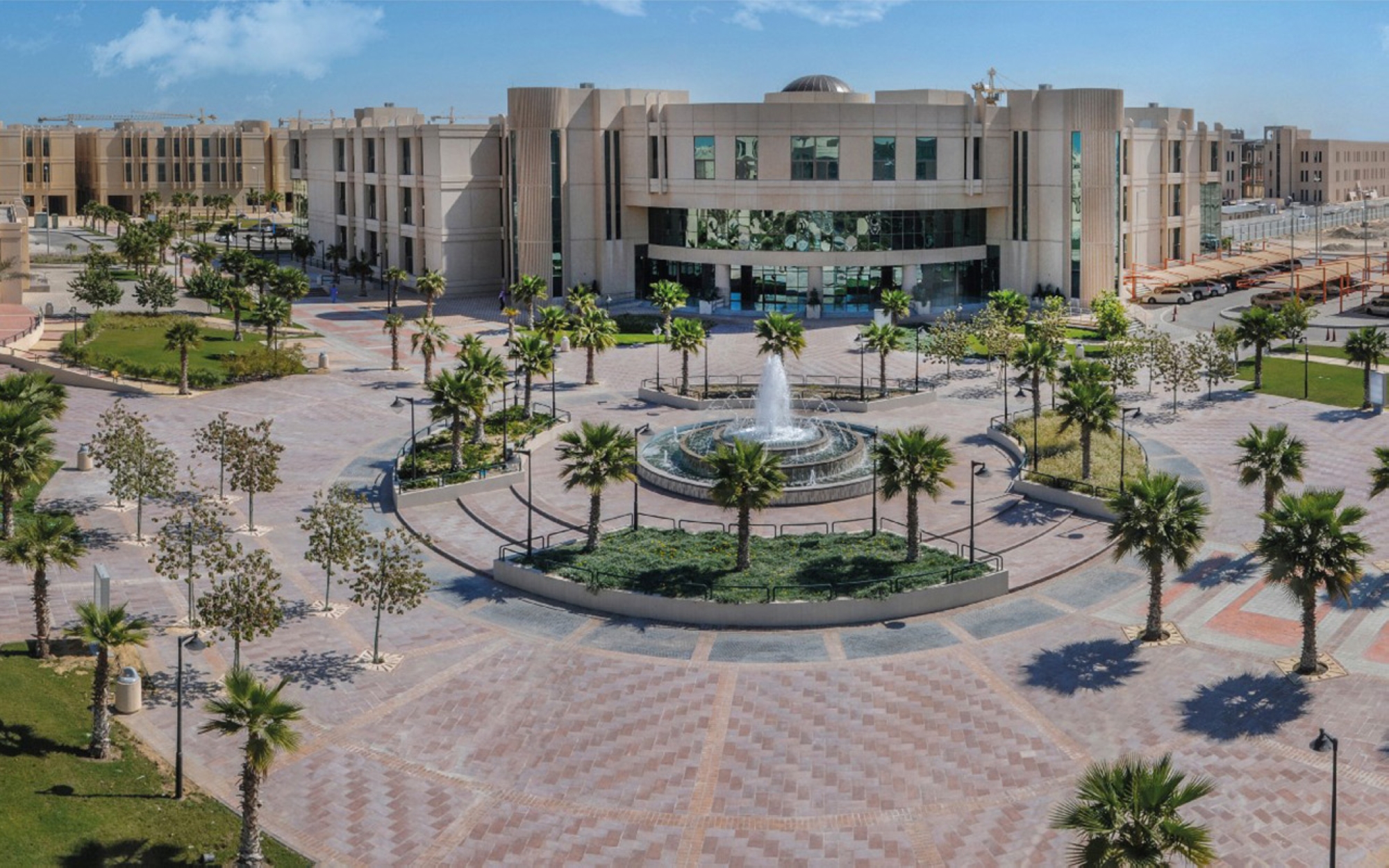
Imam Abdulrahman Bin Faisal University
Imam Abdulrahman Bin Faisal University was established in 1975. Initially, the university's faculties were distributed between al-Ahsa and Dammam. In 2009, the Dammam faculties (Medicine, Medical Sciences, Architecture, and Planning) became independent under the name University of Dammam. It was later renamed Imam Abdulrahman Bin Faisal University, and most of the faculties in the Eastern Province were incorporated into it. The university now comprises nineteen faculties, with over 45,000 male and female students enrolled.
Regarding health faculties, Imam Abdulrahman Bin Faisal University includes the College of Medicine, College of Dentistry, College of Nursing, College of Applied Medical Sciences, College of Clinical Pharmacy, College of Public Health, and the College of Applied Medical Sciences -Jubail. As for the engineering faculties, they include the College of Architecture and Planning, the College of Design, and the College of Engineering. The Colleges of Sciences and Management comprise the College of Applied Studies and Community Service, the College of Business Administration, the College of Computer Science and Information Technology, the College of Sciences, and the Applied College. The Colleges of arts and education are spread across the College of Arts, the College of Education, the College of Sciences and Humanities in Jubail, and the College of Sharia and Law.
Imam Abdulrahman Bin Faisal University houses several research centers, including the Medical Research and Consultation Institute, the Urban Studies and Consultation Center, the Basic and Applied Scientific Research Center, as well as the Scientific Publishing Center.
In 2023, the number of patents granted at Imam Abdulrahman Bin Faisal University reached 146 approved patents, with 145 registered patents, and five inventions that have been developed into a product. In the field of medicine and health, the university obtained forty-nine patents. In engineering, there were forty-three patents, eighteen patents in information security and technology, six patents in design, and thirty patents in basic sciences.
Imam Abdulrahman Bin Faisal University issued an annual summary of registered and granted patents in 2022. The number of registered patents stood at eighty-eight, involving nine colleges. These colleges include Medicine, Dentistry, Applied Medical Sciences, Applied Medical Sciences in Jubail, Public Health, Engineering, Computer Science, Sciences, and the Medical Research and Consultation Institute. The total number of inventors involved in these patents was ninety-seven. As for the granted patents, the number was forty-two, with contributions from seven colleges: Medicine, Dentistry, Applied Medical Sciences, Public Health, Engineering, Sciences, and the Medical Research and Consultation Institute. The number of inventors associated with these granted patents was fifty-three.
King Fahd University Hospital, affiliated with the College of Medicine and the College of Applied Medical Sciences at Imam Abdulrahman Bin Faisal University, was inaugurated in 1981. It was constructed by the Ministry of Health under the name al-Khobar Educational Hospital, but its name was later changed to King Fahd University Hospital. The hospital contains fifty-five beds, in addition to sixteen beds in the day-care unit.
The medical specializations in the hospital include Internal Medicine, Cardiology, Neurology, Neurosurgery, Psychiatry, Nephrology, Gastroenterology, Pulmonology, Dermatology, Pediatrics, Obstetrics and Gynecology, Endocrinology, Laparoscopic Surgery, General Surgery, Cosmetic Surgery, Urology, Orthopedic Surgery, Oral and Dental Medicine, Ophthalmology, Otorhinolaryngology (ENT), Anesthesiology and Pain Management, Audiology, Emergency Medicine, Radiology, and Laboratory Medicine.
Dammam Technical College
Related quizzes
Related articles

